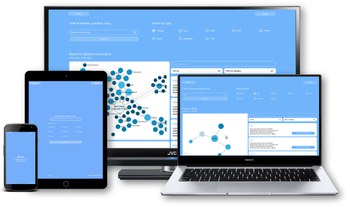Artificial Intelligence and Data Collection
Smartphone and Web-app development for clinical applications

In the digital era we live in, the collection, analysis, and interpretation of medical data have become fundamental to improving the quality of healthcare. With the advent of smartphone and web technologies, it is possible to create innovative solutions to simplify and optimize this process. Our service aims to offer a wide range of mobile and web applications that enable efficient acquisition of medical data and the use of advanced artificial intelligence techniques for data processing and interpretation.
Summary
- Service
- Smartphone Applications
- Web Applications
- Types of Data
- Types of Analyses
- Fees
Service
Our service focuses on implementing tailor-made solutions for the specific needs of medical institutions, healthcare professionals, and patients. We utilize cutting-edge technologies to ensure security, efficiency, and accuracy in managing medical data. The integration with advanced artificial intelligence models allows us to obtain a full automation of the processes and a more efficient analysis of the collected clinical records.
Smartphone Applications
Our smartphone applications are designed to be intuitive and easily accessible for both medical professionals and non-expert clinicians. These applications allow users to securely record and monitor medical data. Features include symptom recording, therapy management, and health condition tracking. Through the integration of artificial intelligence algorithms, the applications can provide personalized recommendations, analyze data to identify patterns or anomalies, and improve the accuracy of diagnoses (clinical decision support systems). The complete digitalization of the information allows clinicians to obtain faster access to the data for their retrospective studies and patients information recovery.
Web Applications
Our web solutions offer a comprehensive interface accessible via web browsers, designed to allow centralized access and management of medical data by healthcare staff and administrators. These platforms enable real-time visualization, updating of digital medical records, and customization of the integrated artificial intelligence services in the mobile versions. The direct integration with smartphone applications allows for more efficient inspection of saved records and a better user interface for data visualization.
Types of Data
Our application development services for medical data acquisition cover a wide range of data types, including textual data, images, and other multimedia formats. Textual data may encompass clinical annotations, laboratory reports, medical records, and more, while images may include X-rays, computed tomography (CT) scans, magnetic resonance imaging (MRI), and diagnostic images captured through smartphone cameras. The ability to integrate heterogeneous data of different natures has the potential to provide a more comprehensive view of the patient and characterize them across various biophysical aspects.
Types of Analyses
For data processing, we employ a combination of advanced techniques including machine learning, statistical learning, neural networks, unsupervised clustering, and natural language processing (NLP). These techniques extract meaningful information from the data, identify hidden patterns, correlations, and improve the accuracy of diagnoses.
- Machine Learning:We use machine learning algorithms to train predictive models that can identify complex relationships in the data and make predictions on clinical outcomes, treatment responses, and other parameters relevant to medical practice.
- Statistical Learning:Statistical learning techniques are used for analyzing data that require in-depth statistical evaluation, such as hypothesis testing, analysis of variance, and regression.
- Neural Network:Neural networks are used to model nonlinear relationships in the data, allowing greater flexibility in representing and interpreting complex medical data.
- Unsupervised Clustering:The application of unsupervised clustering techniques allows us to identify homogeneous subgroups within the patient population, identifying patterns and clusters of patients with similar characteristics that may require specific treatment strategies.
- Natural Language Processing (NLP):NLP is used for textual data analysis, enabling automatic extraction of information from clinical reports, medical notes, and other sources of unstructured text. This allows for the automatic identification of key terms, document categorization, and extraction of relevant information for diagnosis and patient management.
The integrated use of these advanced analytical techniques fully exploits the informational potential of medical data, enhancing understanding of clinical conditions, and supporting more informed and personalized clinical decisions.
Fees
The rates vary depending on the type of analysis and application required and have been determined considering the cost for any innovative research, necessary software architecture, and the use of equipment and person-hours dedicated to the activity. To receive the updated rate card, please send an email to the responsible person.
Responsibles
-
Full Professor
Dipartimento di Scienze Mediche e Chirurgiche - DIMEC
Via Massarenti 9
Bologna (BO)
Tel: +39 051 2143578
Tel: +39 051 20 9 5120
-
Junior assistant professor (fixed-term)
Dipartimento di Fisica e Astronomia "Augusto Righi" - DIFA
Viale Berti Pichat 6/2
Bologna (BO)